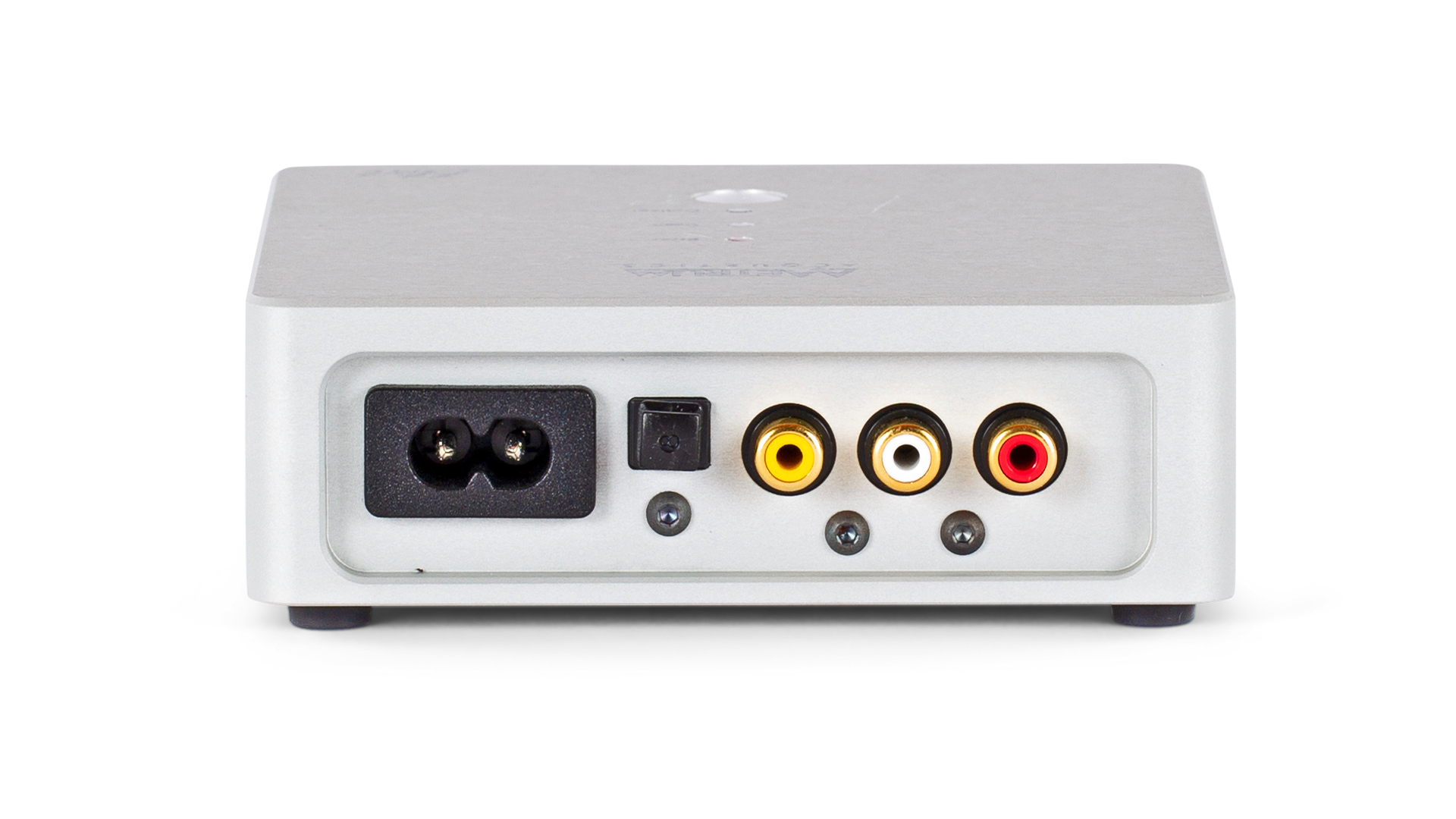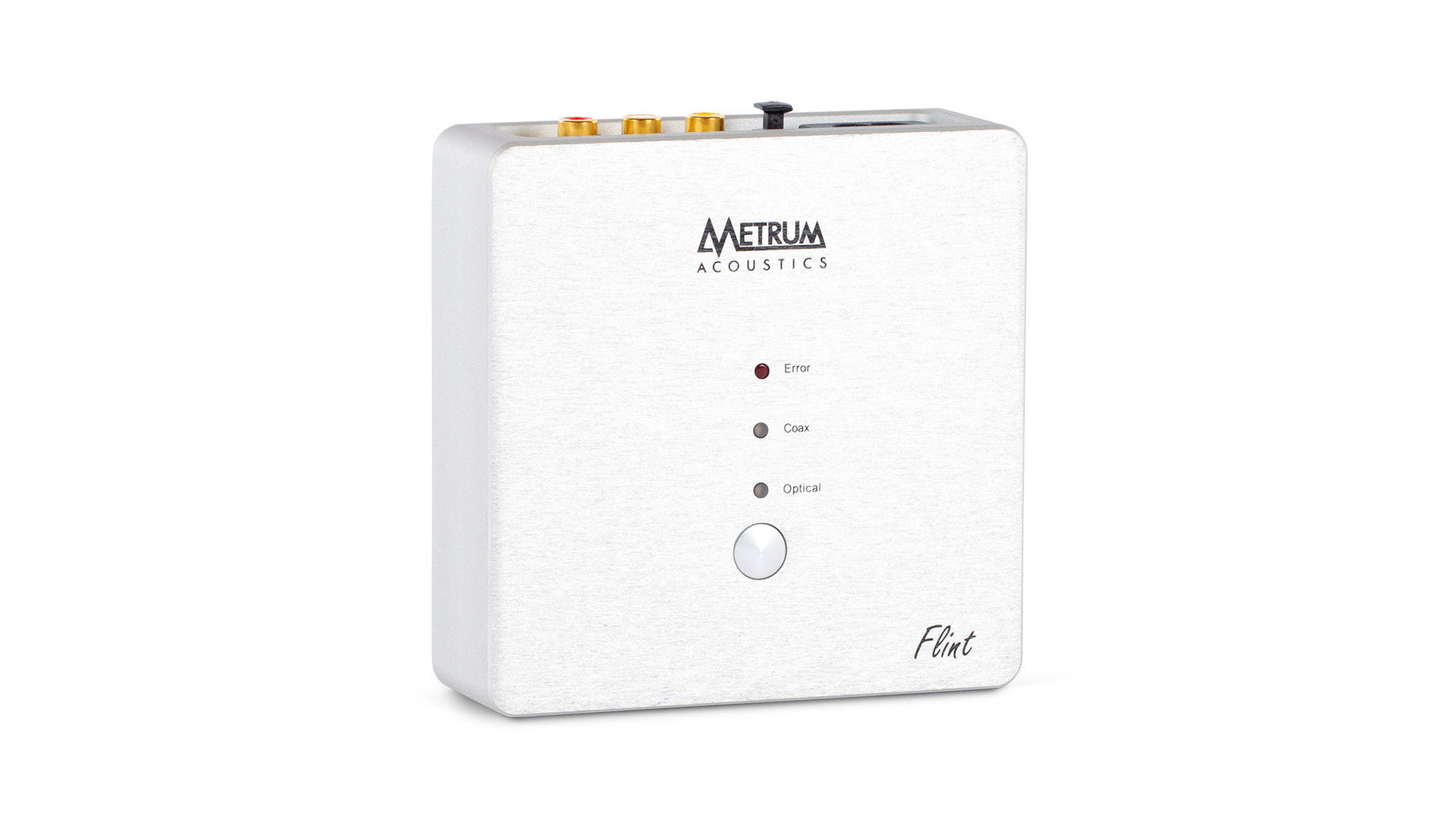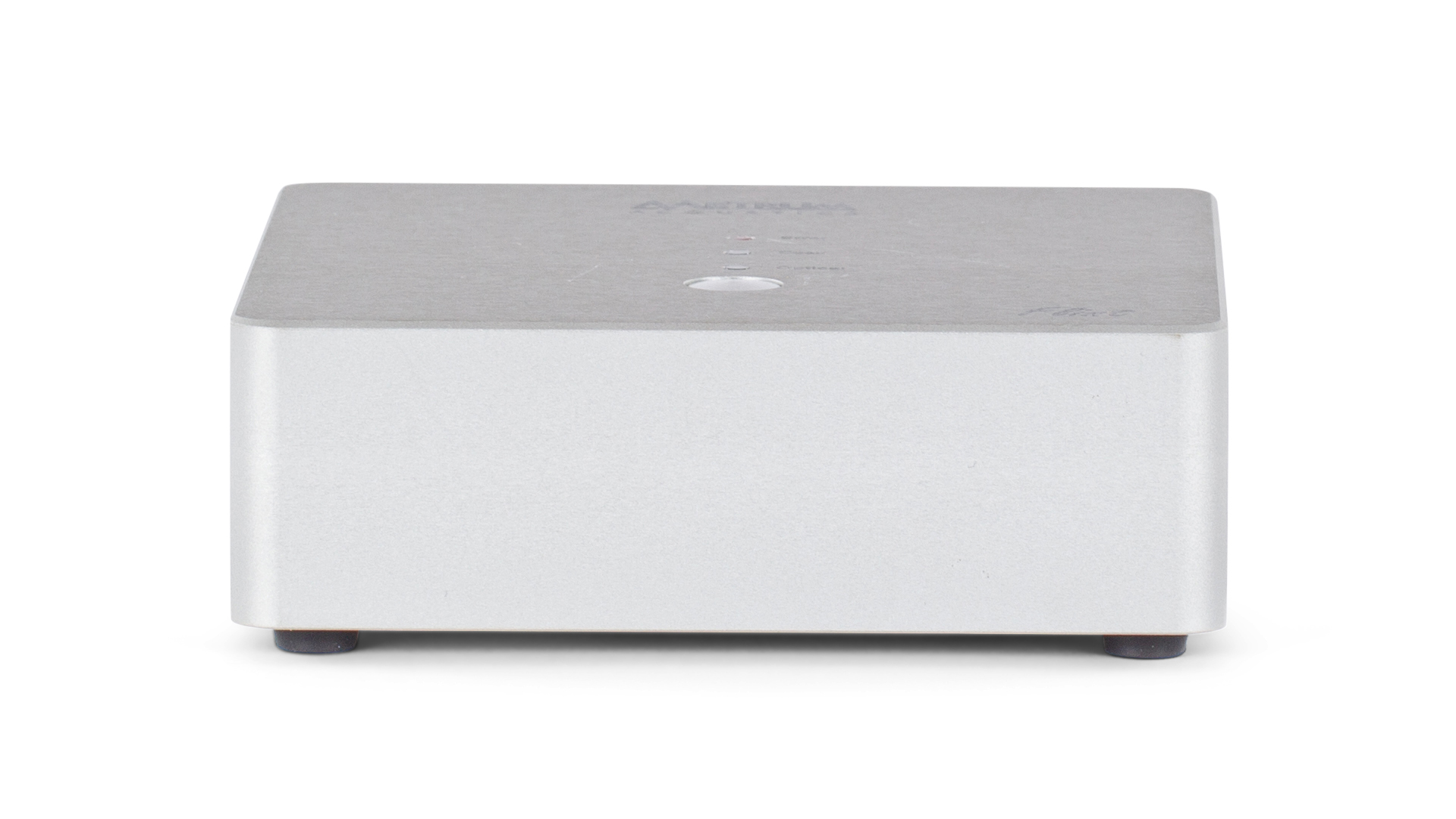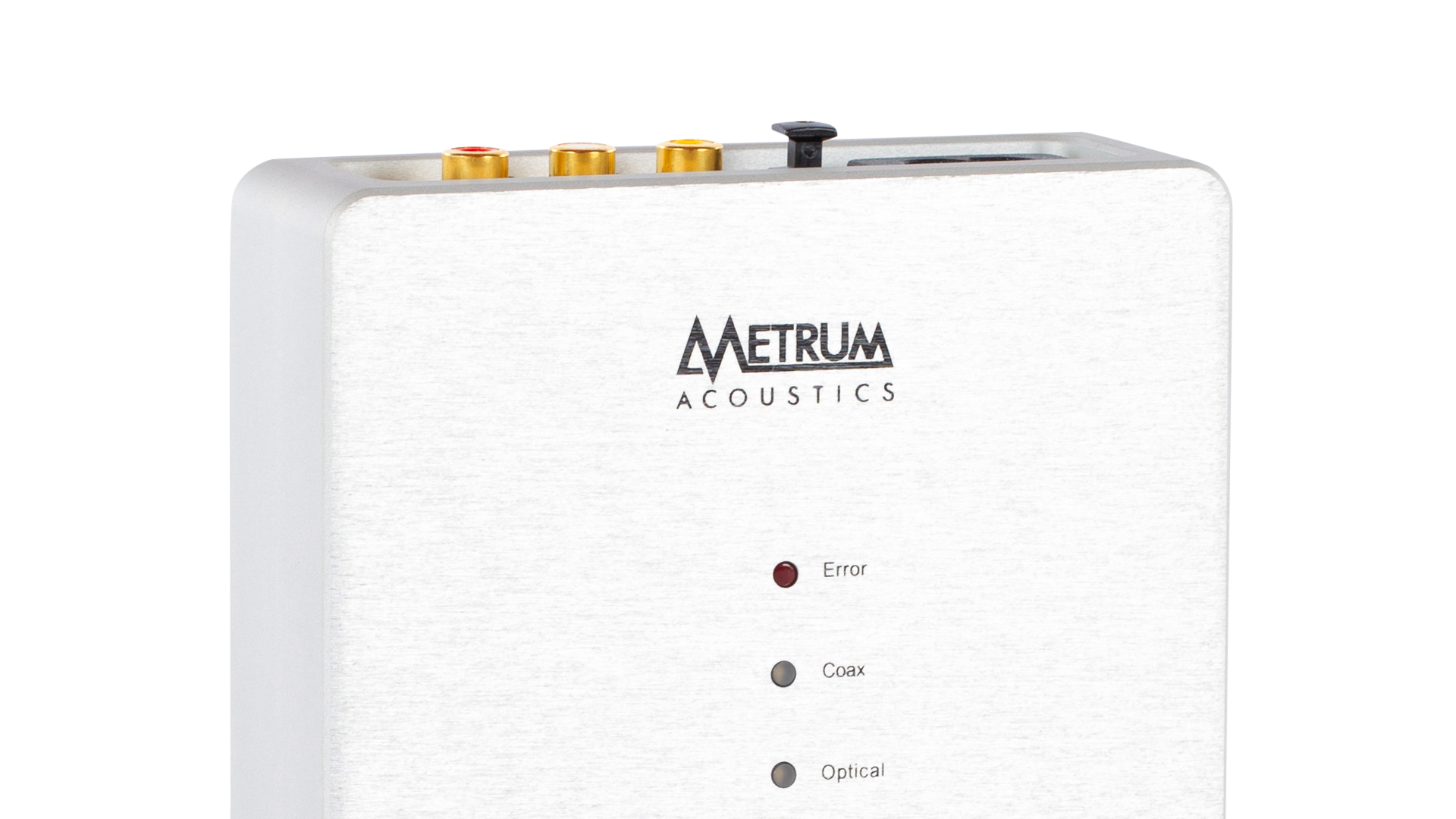What Hi-Fi? Verdict
Metrum Acoustics' Flint DAC isn’t flawless, but it's a good alternative to the class-leading Chord Mojo
Pros
- +
Solid and punchy presentation
- +
Good detail
- +
Pleasing build quality
Cons
- -
Needs greater sonic refinement
- -
Limited to 16-bit PCM signals
- -
No display
Why you can trust What Hi-Fi?
If you judge a product purely on its specifications, you’re likely to swipe left and dismiss the Metrum Acoustics Flint at first glance. This digital-to-analogue converter lacks a USB input and is compatible with 16-bit PCM files at best (though curiously a sampling rate of 192kHz is still acceptable).
It has been a few years since we last reviewed a domestic number cruncher at this price that is so limited. Yet, we can’t help but like the Flint.
Features

While most DACs are happy to use off-the-shelf Delta-Sigma chips from the likes of ESS Sabre or AKM and add plenty of additional processing in the form of oversampling and digital filtering, Metrum has gone down a different route.
The Flint, as with the Dutch brand's other designs, uses multi-bit resistor ladder (R2R) DAC circuitry with no oversampling and just a simple first-order analogue filter operating at around 70kHz to avoid any issues with amplification.

Impedance 100ohms
Outputs 2x RCA (stereo)
Inputs Optical, coaxial
Frequency response 1Hz – 65kHz
Dimensions (hwd) 12 x 12 x 3.5cm
Weight 0.42kg
Metrum claims that the use of a true multi-bit DAC and the lack of additional processing result in improved timing and phase behaviour over the industry's usual digital design approach. We’ve heard arguments for both ways, but the proof, as always, is in the listening.
The Flint is limited when it comes to connectivity. You have a choice of coaxial and optical inputs, with the latter limited to 16-bit/96kHz. This is certainly something to be aware of if your music collection is full of hi-res 24-bit PCM or DSD files.
There’s no indication of the bit depth or sampling frequency of the incoming digital signal, which is a shame, though understandable given that it will invariably be a 16-bit/44.1kHz (CD-quality) stream being used.
Build

Build quality is good, though. This is a compact and nicely made metal-cased unit that feels solid in the hand. Take a look inside and it’s hard not to be impressed by the neat circuit layout while noting the dual proprietary ‘Transient’ digital modules.
Metrum sees the Flint being used as an upgrade to an older CD player or a way to improve the sound of, say, a Sonos source, and in this context the connectivity and file limitations don’t matter.
If you need 24-bit compatibility, you can opt for the Flint DAC Two model, which comes with a £180 ($244, AU$314) premium over the Flint we have on test here but, disappointingly, still doesn’t offer a USB option.
We use a range of digital sources with the Metrum, from the Marantz CD6007 and Cyrus CDi CD players to our reference Naim ND555/555 PS DR music streamer. Amplification is provided by our usual Burmester 088/911 Mk3 pre/power combination, but we also swap in a Cambridge Audio CXA81 integrated to see how the Flint operates with something more price compatible. As for speakers, we go with the ATC SCM 50 and more affordable but still excellent KEF LS50 Meta.
While it’s admirable that Metrum has chosen an unconventional design path, that doesn’t count for much if the performance isn’t good. But we’re glad to report that it is.
Sound

The Flint has an unusually robust sonic character. It sounds more muscular and forthright than any of the conventionally designed opposition we’ve heard. Listen to Bjork’s Vulnicura set and the Metrum sounds right at home, delivering the music with verve and punch. There’s solid kick at low frequencies, coupled to a good supply of agility and articulation.
Bjork comes through with clarity and the energy in her voice is communicated well, even if we’d like a little more in the way of texture and nuance. Overall, there’s still a good level of insight and that information is presented in an organised and composed way.
This DAC is surefooted when it comes to rhythms and has a fine sense of drive. It has the ability to track low-level instrumental strands even when the music becomes busy.
We switch to Mahler’s Symphony No.2 and the Metrum responds with enthusiasm. It delivers the music’s sense of power and authority in an effortless manner, rendering large-scale dynamic sweeps with conviction. The overall effect is to make most of the similarly priced alternatives sound a little soft and tentative.
Stereo imaging is nicely focused and layered, with instruments locked into position even when the music becomes demanding. The soundstage isn’t particularly spacious or expansive, but it remains acceptable at this price.
But for all the Flint’s sonic talent, it is a little short of subtlety. We play Found Songs by Ólafur Arnalds and the Metrum tends to overlook dynamic nuances for something meatier. This affects its ability to communicate the calm but slightly lamenting mood of this album.
We’d like a better performance at higher frequencies; as it stands, these are a little closed in and lack both texture and bite. A little more sonic refinement would be nice, too.
Verdict
While the class leader at this level, the Chord Mojo, is designed as a portable device, it can also be used in domestic surroundings given appropriate cabling – you’ll need a coax to 3.5mm to get a digital electrical signal from a typical CD player, for example, though a standard optical cable will work – and for most people it will be the better buy. It has better connectivity and wider file compatibility, as well as a more rounded performance.
That said, there’s something about the Flint’s no-nonsense approach to music-making that appeals to us greatly. And for that reason, we certainly think it’s worth an audition.
SCORES
- Sound 4
- Features 2
- Build 5
MORE:
Read our guide to the best DACs
Read our Chord Mojo review
What Hi-Fi?, founded in 1976, is the world's leading independent guide to buying and owning hi-fi and home entertainment products. Our comprehensive tests help you buy the very best for your money, with our advice sections giving you step-by-step information on how to get even more from your music and movies. Everything is tested by our dedicated team of in-house reviewers in our custom-built test rooms in London, Reading and Bath. Our coveted five-star rating and Awards are recognised all over the world as the ultimate seal of approval, so you can buy with absolute confidence.

